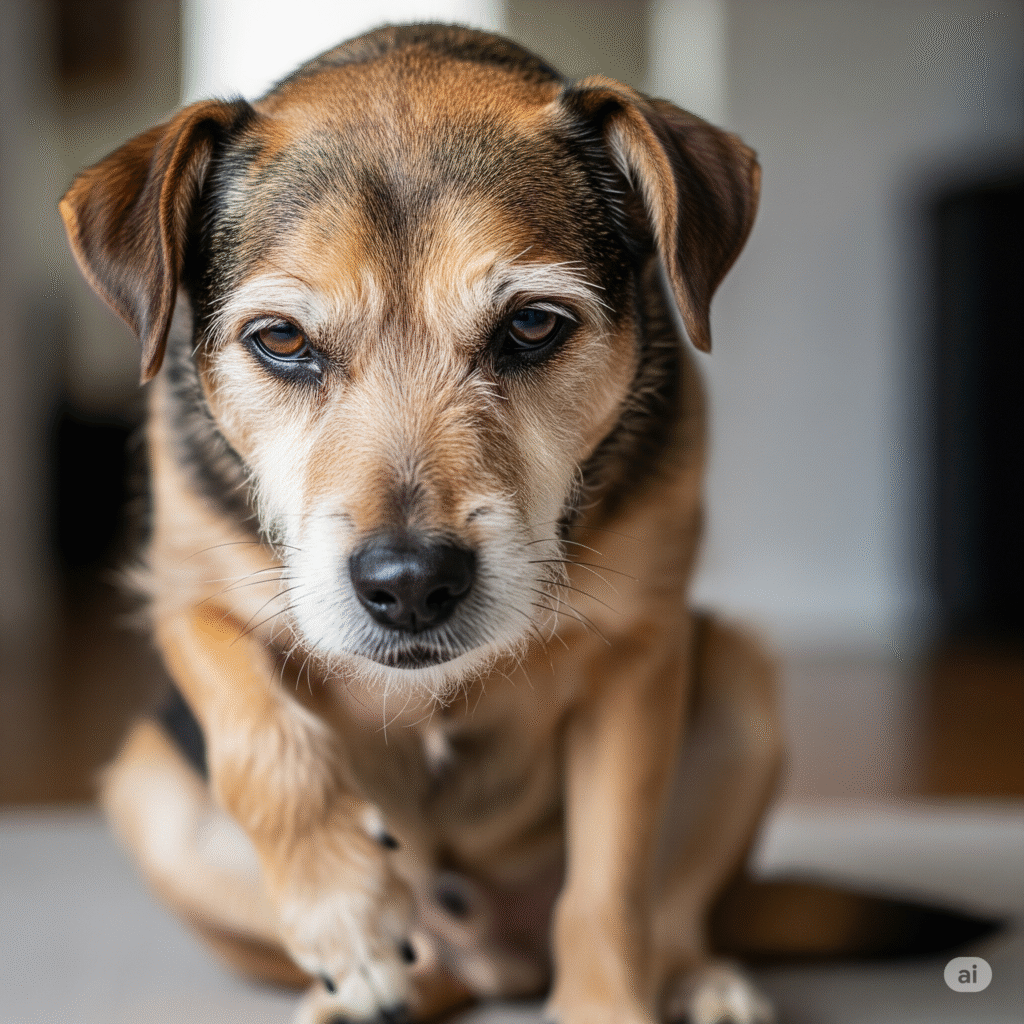
As dogs get older, their bodies go through natural changes—slower movement, more naps, and sometimes, hidden discomfort 🐾💔.
Unlike humans, dogs can’t tell us when they’re in pain, so it’s up to us to spot the signs early. Catching discomfort in its early stages can help you work with your vet to make your senior dog’s golden years more comfortable and happy.
Here are the most common signs your senior dog might be in pain:
1. Changes in Mobility
If your dog struggles to climb stairs, jump onto the couch, or rise after lying down, it may be due to joint pain, arthritis, or muscle weakness. These changes often develop gradually, so keep an eye out for subtle shifts.
2. Limping or Favoring One Leg
A limp can indicate joint issues, soft tissue injuries, or arthritis flare-ups. Senior dogs may try to shift their weight to avoid using a painful limb.
3. Decreased Appetite
Pain—especially dental, stomach, or joint pain—can reduce your dog’s interest in food. If your senior dog skips meals or eats less than usual, it’s worth investigating.
4. Excessive Panting or Heavy Breathing
Dogs pant for many reasons, but if your senior dog pants heavily at rest or during mild activity, it could be due to discomfort, stress, or an underlying health issue.
5. Changes in Behavior or Temperament
Pain can make even the sweetest dog irritable. If your senior dog becomes more withdrawn, grumpy, or snappy, it could be their way of saying something hurts.
6. Restlessness or Difficulty Sleeping
Dogs in pain may struggle to get comfortable, shifting positions often or pacing at night. They might also avoid certain sleeping spots they once loved.
7. Excessive Licking or Chewing a Body Part
If your dog focuses on one paw, joint, or area of their body, they might be trying to soothe discomfort or irritation.
8. Vocalizing More Than Usual
Whining, whimpering, or groaning can be clear signs of discomfort, especially when combined with other symptoms.
9. Changes in Posture
Hunched backs, tucked tails, or stiff neck positions may indicate pain, particularly in the spine or abdomen.
10. Avoiding Activities They Once Loved
If your dog no longer greets you at the door, skips playtime, or avoids going for walks, it could be due to pain limiting their mobility or energy.
What to Do if You Notice These Signs
Never ignore changes in your senior dog’s behavior or routine. Schedule a veterinary check-up as soon as possible. Your vet may recommend pain management options such as joint supplements, anti-inflammatory medications, gentle exercise, or lifestyle adjustments to keep your dog comfortable.
With the right care and attention, your senior dog can still enjoy happy, active, and pain-free days well into their golden years 🐶💛. PetsDogPuppy
